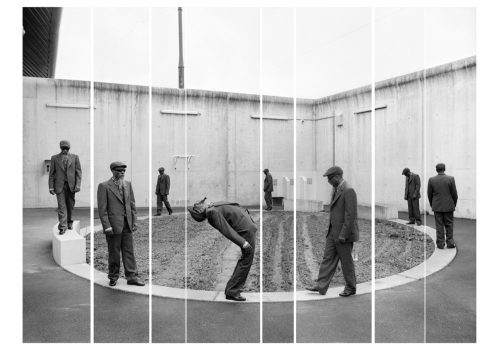The space in which a prisoner is constrained constitutes the reality of his sentence. However the architecture of prisons is incredibly diverse.
I wanted to see what it is like: photographing prisons rather than prison. Between April 2016 and January 2018, I photographed in six prisons in collaboration with prisoners.
Prison architecture is an optical machine at the service of surveillance. What the supervisor sees, what the prisoner does not see from his cell or the passer-by from the street, all this is planned by the architect. Taking pictures in prison is like participating in a constrained and uneven look. By taking an interest in architecture, I put this difficulty at the center of my photographic work. How to photograph in a surveillance system? In each prison, I organized workshops to share this question with prisoners, they who are confronted daily to these architectures. We took photographs together, I did some alone, we discussed both the prison and our images, we made images over again, and so on. I have proposed practices but I also willingly laissez faire: some used me to stage an experience, to represent an imaginary and even illustrate a message. This joint activity is at the center of my documentary approach. Photography is as much a recording tool there as the means and the stake of an interaction. Hence the importance of the stories that accompany the photographs: the texts tell of the process of images and the exchanges they have sometimes provoked. Thus, the heterogeneity of the forms comes from an attention to situations and encounters.
The possibility of showing images of prisoners openly is recent. Hidden behind black bands or coarsely blurred, the faces were previously given to all fantasies. From now on, the viewer can have a relationship with the represented figures. However, I did not want to do a series of portraits, for fear of reducing my models to their condition of prisoner. I preferred to trivialize the appearance of faces, show them in the flow of our activity, and photograph the prisoners like ordinary people. When it arises, the portrait is wanted and thought by the model. Finally, the architecture of prisons is both the subject of the work and the space in which it is done. Bodies are the measure of these spaces, they activate them, reveal them and sometimes try to resist them.
Maxence Rifflet, April 2018
Maxence Rifflet : Our Prisons
March 14, 2020
Centre d’Art Gwinzegal
Ancienne prison de Guingamp
4 rue Auguste Pavie
22200 Guingamp
















